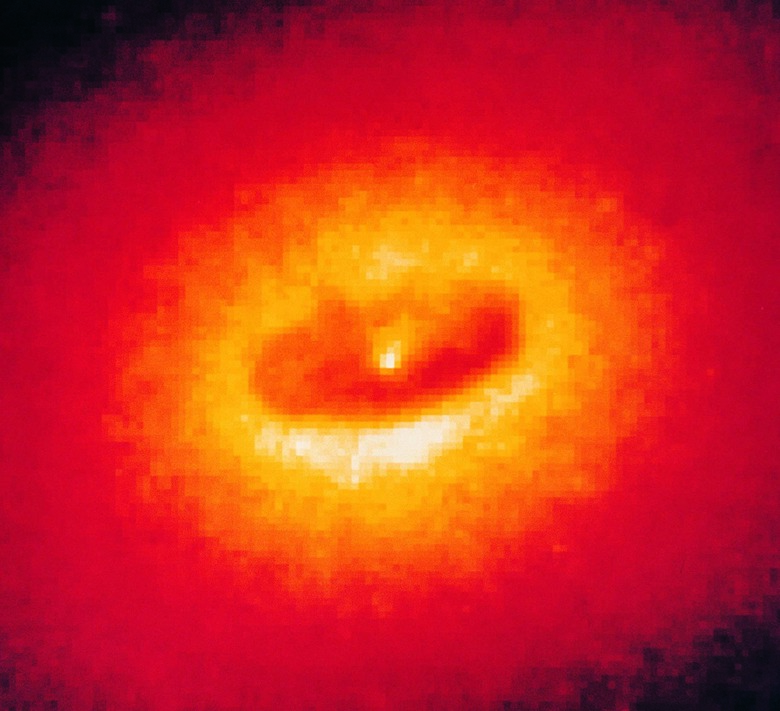The Color Of A Black Hole
Black holes are the most dense objects in the universe. Because of their density, they form extremely powerful gravitational fields. Black holes absorb all surrounding matter and energy within a certain proximity. For this reason, these celestial objects emit no light and therefore do not have a color. Astronomers can detect them, however, by monitoring the properties of the materials and energy surrounding them.
Electromagnetic Radiation
Electromagnetic Radiation
The electromagnetic spectrum describes the range of wavelengths and frequencies of different types of radiation. X-rays, radio waves and visible light are among the many types of radiation found on this spectrum. You experience the phenomenon of color when electromagnetic radiation of certain wavelengths reaches your eyes. Electromagnetic radiation travels faster than anything in the universe. It travels at almost 300 million meters per second (over 186,000 miles per second). Nevertheless, gravity affects electromagnetic radiation. Not even electromagnetic radiation can escape the gravitational force of a black hole. Therefore, you cannot actually see anything when you look at a black hole. No light, visible or otherwise, is emitted from the black hole itself.
The Event Horizon
The Event Horizon
The event horizon describes the point at which the force of gravity exerted by a black hole is strong enough that nothing can escape it. Because the gravitational force exerted by an object diminishes further away from the object, matter can escape a black hole's gravity in the area beyond the event horizon. While objects inside the event horizon can never be seen, observers will be able to see objects outside the event horizon.
Redshift
Redshift
When astronomical bodies move away from the observer, they appear red in color. This redshift happens because the speed at which they move away from the observer stretches the wavelength of visible light emitted by the object. This light is shifted toward the red end of the electromagnetic spectrum, which is characterized by longer wavelengths. As objects move toward the event horizon of a black hole, they experience an infinite redshift. Hence, they appear redder in color to an observer until they become too dim to see.
Accretion and X-rays
Accretion and X-rays
As matter approaches a black hole, it moves in a shape known as an accretion disk. Generally, these disks form due to interactions between the matter's own momentum and the black hole's gravitational forces. As the force of gravity on the moving matter increases, the matter heats up due to the friction between its constituent atomic particles. Eventually, this energy is released as electromagnetic radiation — mostly x-ray radiation. These x-ray emissions near a black hole typically project out in poles near the event horizon perpendicular to the accretion disk. Therefore, an x-ray telescope can see emissions related to a black hole.
Cite This Article
MLA
Murmson, Serm. "The Color Of A Black Hole" sciencing.com, https://www.sciencing.com/color-black-hole-4921/. 24 April 2017.
APA
Murmson, Serm. (2017, April 24). The Color Of A Black Hole. sciencing.com. Retrieved from https://www.sciencing.com/color-black-hole-4921/
Chicago
Murmson, Serm. The Color Of A Black Hole last modified March 24, 2022. https://www.sciencing.com/color-black-hole-4921/
